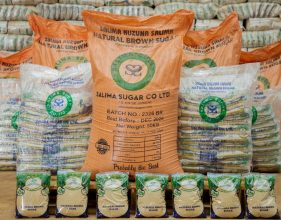Rising food prices hit poor households
Malawian households spend an average of 63 percent of their total budgets on food, a development the World Bank says leaves the poor vulnerable to price hike shocks.
In its recently published April 2022 Africa’s Pulse, the bank said the high share of food expenditures in the budget impact on rising food prices affecting poorer households more than wealthier ones.
Reads the report in part: “Although all households will be affected by rising food inflation, the poorer households [bottom 60 percent] in countries with high shares of national food expenditure will suffer the most.

“The share of spending on food is relatively high among the poor in sub-Saharan Africa countries.”
The bank, however, observes that although rising commodity prices pose a challenge to some sub-Saharan Africa countries, they could also provide opportunities if proper economic policies are put in place.
Said the bank in the report: “Policy options in response to existing market disruptions could differ depending on whether the associated shocks are transitory or permanent.
“If the shock is transitory, governments need to explore or strengthen mechanisms to capture the windfall from higher prices, and deploying some of these resources to protect the poor and vulnerable.”
The bank has since warned that soaring commodity prices will translate into higher inflation.
Based on consumer price index (CPI), a tool that measures the weighted average of prices of a basket of consumer goods and services, food expenses account for 40 percent of consumer spending in the region.
In advanced economies, they account for 17 percent of household expenditures.
Meanwhile, Malawi’s year-on-year headline inflation inched up by 0.9 percentage points to 13 percent in February from 12.1 percent in January on rising food and non-food prices.
According to published data from National Statistical Office, during the month under review, national food inflation rate rose to 15.3 percent while the non-food inflation rate rose to 10.1 percent from 14.2 percent and by 9.6 percent respectively.
Maize, as part of the food component, accounts for about 45.2 percent of the CPI, which is an aggregate basket of goods and services for computing inflation.
Speakig in an earlier interview, Consumers Association of Malawi executive director John Kapito said the rising inflation was being felt by consumers as the cost of living continues to rise.
“Many Malawians are currently facing challenges to access the very basic needs that a year ago were affordable.
“The rising inflation has also affected the lack of access to disposable incomes.”
Meanwhile, the cost of living in Malawi’s four cities of Lilongwe, Zomba, Blantyre and Mzuzu rose by an average 5.45 percent to K255 593 in February with the food basket rising to an average of K147 134 while non-food basket rose to an average of K107 985 for a household of six members.
Minimum wage, on the other hand, has remained at K50 000.






2 Comments